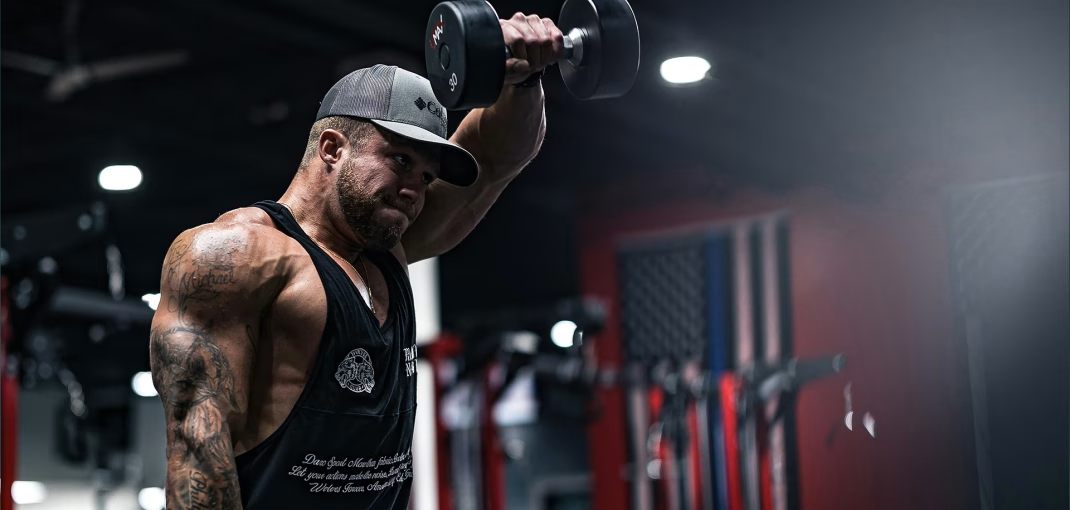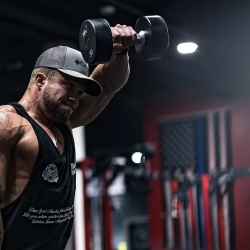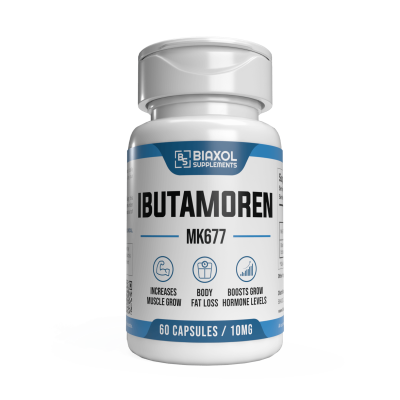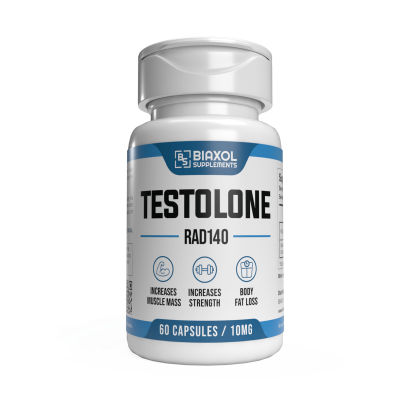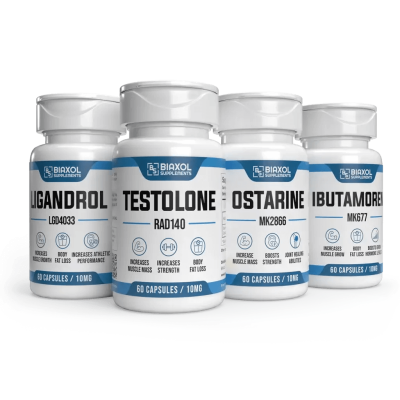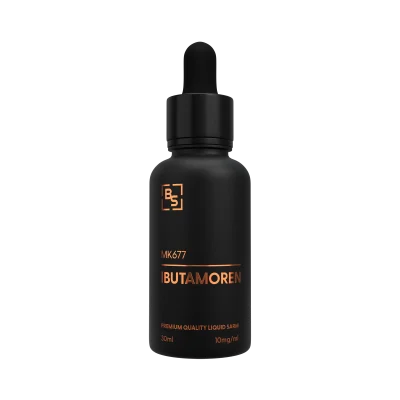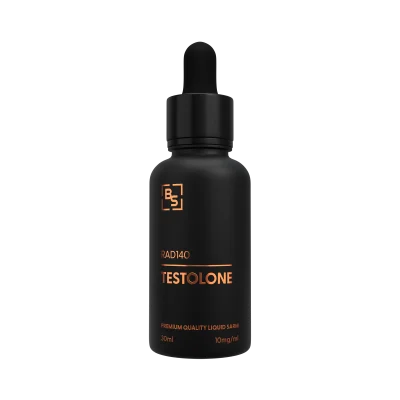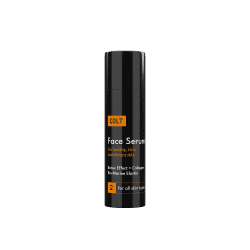The Hidden Risks of SARMs
If You’re Using SARMs and Not Running On-Cycle Support, You’re Cutting Corners on Your Health. Period. SARMs look clean on paper. No conversion to estrogen. Less androgenic. Easy to dose. But under the hood, they can hit your system, especially your liver, cholesterol, oxidative stress pathways, and hormone axis.
Let’s break this down in a simple way:
- What your body goes through during a SARMs cycle
- How each compound in Cycle Support actually helps
What SARMs Do to Your Body (Beyond the Muscle Gains)
SARMs bind to androgen receptors in muscle and bone. That part works. You gain size, hold onto strength, and stay leaner than you would with a bulking steroid like testosterone or deca.
But here’s what else they do:
- Suppress natural testosterone – this starts as early as week 1 with compounds like RAD-140 or YK-11. Your LH and FSH can crash.
- Elevate liver enzymes – SARMs are non-methylated, but they’re still hepatotoxic. YK-11 and S23 are the worst offenders.
- Worsen our cholesterol profile, HDL goes down, LDL goes up. This happens even on low doses.
- Raise blood pressure – through water retention (rarely) and changes in vascular tone
- Increase oxidative stress – especially in the liver, kidneys, and cardiovascular system
It doesn’t matter if you’re running a “mild” cycle. These effects can happen.
Why You Need On-Cycle Support
Let’s get one thing straight: on-cycle support isn’t there to “undo” suppression. It’s there to keep your body from crashing mid-cycle.
Key Benefits of On-Cycle Support:
- Reducing liver strain so your ALT/AST don’t spike
- Keeping blood pressure in check so you don’t walk around feeling like a balloon
- Supporting cholesterol so you’re not borderline heart attack at 27
- Slowing down oxidative damage from high-dose training, high food intake, and the compounds themselves
- Helping your body manage stress and recover faster
You don’t notice most of the internal damage until it’s too late. Just because you feel fine doesn’t mean you are.
Now Let’s Break Down Each Ingredient in Cycle Support and Why It’s in There
N-Acetyl-L-Cysteine (400 mg)
NAC is a precursor to glutathione, which is the most powerful antioxidant your body produces.
When you’re running SARMs, your liver is processing extra toxic metabolites. It doesn’t matter that SARMs aren’t methylated, your liver still catches the hit through oxidative stress.
What NAC actually does:
- Boosts glutathione production in the liver
- Lowers liver enzymes (AST/ALT) when they spike
- Protects against cellular damage from oxidative stress
- Helps detoxify by neutralizing free radicals
- Improves immune resilience, which drops during hormonal stress
You know how hospitals use NAC to treat Tylenol overdoses? That’s not marketing. That’s biochem. It saves livers under real toxicity. So using it during a SARMs cycle is basic protection.
If you’re not running NAC, you’re gambling with liver function.
Alpha Lipoic Acid (300 mg)
ALA is a dual-soluble antioxidant, meaning it works in both water-based and fat-based parts of the cell. That’s rare.
SARMs like S23 or YK-11 increase metabolic activity, and your mitochondria pump out more free radicals as a result. ALA goes in and handles cleanup.
ALA benefits during a cycle:
- Reduces systemic oxidative stress
- Supports liver regeneration pathways
- Enhances insulin sensitivity (key if you’re eating in a surplus or using SARMs that affect glucose)
- Regenerates other antioxidants like Vitamin C and glutathione
- May reduce inflammation markers in blood
Insulin sensitivity is the silent killer in bodybuilding. Everyone wants to bulk, but if your insulin signaling goes to hell, you’re just getting fat with water retention. ALA helps keep your cells responding properly to carbs and training stress.
Hawthorn Berry Extract (300 mg)
People underestimate cardiovascular damage from SARMs. It’s not just about blood pressure, it’s about how hard your heart has to work during a cycle.
Hawthorn extract supports cardiovascular efficiency.
It’s not hype, it’s herbal pharmacology.
What it does:
- Mildly lowers blood pressure by relaxing blood vessels
- Improves coronary blood flow (more oxygen to your heart)
- Strengthens heart muscle contractions, supports cardiac output
- Has natural diuretic effects, reducing water retention
- Can lower anxiety, useful when you’re overstimulated on stimulants or SARMs that affect mood
Hawthorn isn’t strong like pharmaceutical beta blockers, but it adds a low-grade support that reduces pressure on your heart during peak cycle stress. And it works daily, without crashing your energy.
If you’ve ever gotten winded too easily during a cycle, or noticed your resting heart rate creeping up, this is one of the tools that helps control it.
Grape Seed Extract (300 mg)
GSE is rich in compounds called oligomeric proanthocyanidins (OPCs). These are potent antioxidants that focus on vascular health.
Your blood vessels take a beating during SARMs cycles. High androgens, extra food, more blood volume, it all puts pressure on the endothelium (vessel lining).
Grape seed during cycle:
- Reduces oxidative damage to blood vessel walls
- Strengthens capillary integrity (especially useful when you’re training heavy and inflamed)
- May help modulate blood pressure
- Improves circulation, better nutrient delivery to muscles
- Supports skin and connective tissue health (good if you’re prone to acne or stretch marks on cycle)
Here’s the big win: GSE helps counter the endothelial dysfunction that SARMs cause indirectly. Your pumps improve, your recovery improves, and your vascular system doesn’t fall apart.
Coenzyme Q10 (100 mg)
This one’s for your mitochondria. SARMs push performance. More volume, more intensity. That burns out cellular energy faster than usual.
CoQ10 helps your cells recover and produce ATP, the energy currency of the body. It’s essential for the heart, brain, and muscles.
What CoQ10 does for you:
- Increases mitochondrial efficiency
- Supports cardiovascular function
- Reduces fatigue during suppression
- May protect testicular mitochondria during HPTA suppression
- Reduces oxidative stress in high-output tissues
If you’ve ever felt flat and slow during the last few weeks of a SARMs cycle (fatigued, but still can’t sleep well) it’s likely mitochondrial fatigue. CoQ10 can help buffer that out.
Zinc (30 mg)
Zinc plays a direct role in testosterone production, enzyme function, and immune health.
Every SARMs user hits a point in the cycle where libido dips or sleep gets weird. Zinc helps, and 30 mg is a clinical-level dose, not pixie dust.
Why it matters on cycle:
- Helps maintain testosterone baseline during suppression
- Supports immune function (important when training hard and eating big)
- Helps regulate sleep quality and hormone release
- Crucial for recovery and inflammation control
Zinc deficiency is common in athletes, and you lose it through sweat. If you’re sweating buckets and not replacing it, you’re just asking for hormonal dysfunction.
Black Pepper Extract (5 mg)
Simple one. This doesn’t do anything directly for your health, but it helps your body absorb the rest of the compounds.
It:
- Increases bioavailability of CoQ10, ALA, NAC
- Supports digestive enzyme activity
- Helps reduce gut inflammation slightly
Black pepper extract isn’t exciting, but without it, half of what you’re taking ends up in the toilet.
Final Word
This product doesn’t have any garbage fillers. Everything in it serves a job. When you run SARMs, your body is under more biochemical stress than you think. Cycle Support gives you a buffer so:
- You recover faster
- You don’t feel trashed by week 5
- Your bloodwork doesn’t come back wrecked
- You don’t have to “hope” you’ll recover after the cycle ends
No bro science here, this is straight biochemistry, built around the real demands of enhanced athletes.

